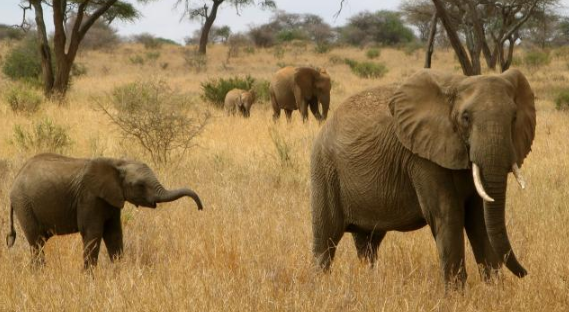TOEFL スピーキング Question 3 学習ステップ

マイチューター 「TOEFL スピーキング Perfect Master (Intermediate)」
カリキュラムでは、Question 3 対策として、試験問題標準レベルで様々な
トピックを使い、以下の流れで効果的、実践的な練習を繰り返し、
スコアアップへ導きます。
目標スコアー 80点(Speakingセクション 20点)を目指す受講者に適した
カリキュラムになっています。
学習ステップ
ステップ 1 リーディング アカデミックなテーマについての短い課題文を読む
↓
ステップ 2 チェックテスト リーディング内容の理解度をチェックするための5つの質問に解答します。
↓
ステップ 3 リスニング 関連する講義を聞き概要をメモします。
↓
ステップ 4 スピーキング 試験同様の質問に対し、解答へ導くため用された
4つの質問に解答します。
↓
ステップ 5 スピーキング 4つの解答を基に解答を作り上げます。
↓
ステップ 6 比較と復習 模範解答を聞いて、自分の解答と比較します。
▮ Read
STEP 1 | Reading | Read the following an academic subject.
Keystone Species
Some animals have disproportionate, yet positive, effects upon their environments for a number of reasons. These animals are referred to by scientists as keystone species. They receive this moniker because, just like the keystone is the crucial stone in an arch that keeps it from falling, without the presence of a keystone species, a particular habitat would be changed considerably, often for the worse. Animals can be keystone species for many reasons. The most prominent keystone species are predators, but other animals can positively change their habitats in other ways like changing the environment or spreading nutrients through their habitats.

STEP 2 | Comprehending 読解力テスト | Answer the following questions to make sure you understand the reading
1 What is a keystone species?
2 What is the importance of the word “keystone”?
3 What would happen to a habitat without the presence of a keystone species?
4 What is the main way in which animals serve as keystone species?
5 What are some other ways in which animals can be keystone species?

1 __________________________
2 __________________________
3 ____________________
4 ____________________
5 _________________________
Comprehending 解答例
1. A keystone species is an animal that has a greater than normal effect on its environment.
2. The keystone is the most important stone in an arch, so a keystone species is the most important animal in its environment.
3. A habitat would change in a negative way without its keystone species.
4. The major way animals serve as keystone species is as predators.
5. Other ways animals can be keystone species are by changing their environments and spreading nutrients in their areas.
▮ Listen
STEP 3 | Listening & Note Taking | Listen to a lecture about the same topic, and take notes.

スクリプト
We’ve talked about some of the animals in Africa and the roles they play in their environments, but let me tell you about the most important one. Are you ready? It’s … the elephant. Really. I’m serious. Actually, the elephant is a keystone species in its part of Africa. Here, let me explain it. First, elephants have prodigious appetites. Do you know how much they eat daily? They chow down about 500 pounds of vegetation. Wow. Thanks to elephants, the areas in which they live don’t get overrun with plants. Why is this important? Well, if elephants weren’t there, their habitat would be filled with vegetation, which would cause most other animal species either to migrate or simply become extinct. They wouldn’t be able to handle the resulting new environment. Since they eat lots, elephants also defecate a lot. Because elephants are somewhat nomadic, they spread nutrients for the soil to absorb, and, through their waste, they essentially plant seeds, which will grow up to be plants that other animals can feed upon. Clearly, then, elephants are crucial to their environment.
Note-Taking メモ取り
______________________________________________________________________________________________________________________________________________________________________________________________________
● 質問
Q The professor describes the importance of elephants to their habitats. Explain how the elephant’s importance relates to keystone species.
STEP 4 | Organizing 解答の組み立て | Ask yourself the following questions and organize your ideas.
1 What is the keystone species in Africa?
2 What is the importance of elephants eating so much vegetation daily?
3 What is the importance of elephants defecating in various places?
4 How do keystone species relate to elephants?
▮ Speak
STEP 5 | Response 解答| Make your response using the above information
The professor begins by telling__________________________________
_________________________________ According to the lecturer,____
____________In the reading, ___________________________________
___________________________This represents the idea of___________
______________________________________________________________
_________ If you look at the details,_______________________________
______________________________________________________________
Something else to remember is ___________________________________
解答例
1. Elephants are the keystone species in Africa.
2. Elephants eat vegetation and keep plants from overrunning the region, which makes for a comfortable environment for many animals.
3. When elephants defecate in different places, they provide the soil with nutrients, and they spread different plants’ seeds, which will grow and then feed other animals.
4. Without elephants, Africa would be a drastically different place, so this makes them a keystone species.

STEP 6 | Compare 比較 | Listen to a sample response, and compare it with yours.
Sample Response 模範解答
The professor begins by telling the students that the keystone species in Africa is the elephant. He states that a keystone species is defined as an animal that has an incredibly large effect on its environment. While the most common keystone species are predators, there are other ways in which animals can serve as a keystone species. This is the case of the elephant. To begin with, elephants eat around 500 pounds of vegetation a day. This keeps the forest from expanding too much, something which would inconvenience other animals to the point that they would either migrate from the region or merely die off. Also, when elephants wander and defecate, they enrich the soil and plant seeds that will become other plants and trees. Animals can then use these new plants as food sources.







